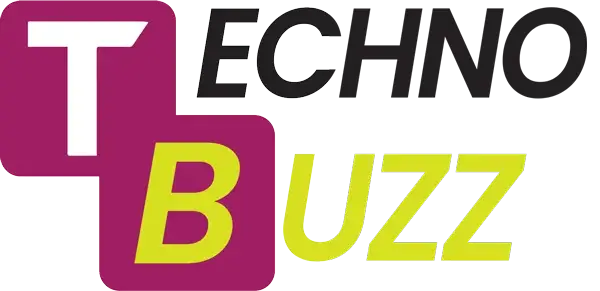Pencils have gained attention recently for their unique applications and significance in various fields. Whether you’ve encountered the term before or are exploring it for the first time, this guide will provide a detailed understanding of pencils, their uses, benefits, challenges, and solutions.
- What Are Pencils?
Pencils refer to a specialized term used in various contexts, particularly in scientific, industrial, and technological domains. Though less familiar to the general public, they play an essential role in different industries.
Peñiculs can be described as a blend of materials or compounds engineered for specific applications. They offer tailored characteristics, making them suitable for a range of uses. Their composition and adaptability give them a broad scope, making them critical to several fields.
- History and Evolution of Pencils
The concept of pencils has evolved alongside advancements in technology and science. Initially, they were limited to niche sectors, but over time, their potential expanded. As new materials emerged and research deepened, the applications of peñiculs broadened significantly.
In the late 20th century, increased understanding of material science led to significant innovations in peñiculs. Researchers discovered that by modifying the composition of peñiculs, they could enhance specific properties, leading to more specialized uses.
- Key Features of Peñiculs
Peñiculs exhibit several key features that set them apart from conventional materials:
- Adaptability: They can be customized for different applications.
- Durability: Peñiculs often last longer than traditional materials in specific environments.
- Efficiency: They improve processes by reducing waste and enhancing performance.
- Environmentally Friendly: Many peñiculs contribute to reducing environmental footprints.
These features make peñiculs a favored choice in both technological and industrial applications.
- Why Are Peñiculs Important?
Peñiculs are vital because they solve complex problems in fields ranging from healthcare to manufacturing. Their adaptability allows for specific solutions that traditional materials cannot provide. For example, in environments where high resilience or specialized properties are necessary, peñiculs offer an ideal solution.
- Benefits of Peñiculs in Different Fields
- Healthcare Applications
In healthcare, peñiculs are often used in medical devices and treatments. Their unique properties make them ideal for creating sterile, biocompatible materials used in implants, prosthetics, and medical tools. Additionally, peñiculs contribute to more efficient drug delivery systems.
- Industrial Uses
Industries use peñiculs to improve efficiency and durability. They play a role in manufacturing, where their specific qualities enhance product longevity and reduce production costs. Their ability to withstand harsh environments makes them a staple in heavy industries.
- Environmental Impact
Peñiculs can be designed to be more eco-friendly compared to traditional materials. Their efficiency reduces waste, while their durability lessens the need for replacements, ultimately lowering resource consumption. Some peñiculs are also biodegradable, helping combat pollution.
- Common Applications of Peñiculs
- Case Study 1: Peñiculs in Manufacturing
In manufacturing, peñiculs are used to produce components that need to withstand high pressure, extreme temperatures, or corrosive environments. For example, automotive industries rely on peñiculs for making engine components that endure intense wear and tear.
- Case Study 2: Peñiculs in Scientific Research
Peñiculs are also integral to scientific research. In laboratories, they are used to develop materials with specific attributes, such as high conductivity or chemical resistance. This flexibility allows scientists to explore new possibilities in energy storage, nanotechnology, and more.
- Challenges in Adopting Peñiculs
Despite their benefits, peñiculs come with challenges. One common hurdle is the cost of production. Since they often require specialized manufacturing processes, they can be expensive. Another issue is that peñiculs sometimes require precise conditions to function, making them unsuitable for all environments.
- Overcoming Peñicul-Related Challenges
To address the cost of peñiculs, some companies are investing in research to find more cost-effective production methods. Innovations in material science have led to more affordable peñiculs without sacrificing quality. Furthermore, advancements in production techniques have expanded the range of environments where peñiculs can be used.
- Innovations in Peñiculs
Recent innovations in pencils have focused on enhancing their properties even further. Scientists are working on creating pencils with self-healing abilities, which would revolutionize industries like construction and medicine. These new pencils would automatically repair minor damage, extending their lifespan.
- Misconceptions About Pencils
One common misconception is that pencils are only useful in high-tech industries. While they do have specialized applications, they are also used in everyday products. For instance, some household items, like cleaning products or clothing, contain peñiculs designed to improve performance or durability.
- Future Prospects for Peñiculs
The future of peñiculs looks promising. With continued research, they are expected to become even more versatile and accessible. As production methods improve, pencils will likely find their way into more consumer products, from electronics to eco-friendly packaging.
- How to Get Started with Pencils
For companies or individuals interested in exploring pencils, the first step is understanding the specific needs of the project. Different types of peñiculs are suited to different tasks, so it’s essential to work with experts to select the right material. Additionally, testing and validation are key to successful integration.
- Real-World Example of Peñiculs in Action
A leading car manufacturer recently integrated peñiculs into its electric vehicles, using them to create lighter, more efficient battery casings. The results were remarkable, as the vehicles achieved better performance and longer battery life while reducing overall weight.
- Comparing Peñiculs with Other Technologies
Peñiculs often outperform traditional materials in durability, efficiency, and adaptability. While standard materials like plastic or metal may offer cost benefits, peñiculs deliver superior performance in demanding conditions. Compared to composites, peñiculs can be engineered for greater precision, making them ideal for specialized uses.
- Conclusion
Peñiculs have proven to be a game-changer in various industries, offering tailored solutions where traditional materials fall short. Their adaptability, durability, and efficiency make them valuable across healthcare, manufacturing, and environmental applications. As innovation continues, pencils are poised to play an even greater role in shaping the future of technology and industry. For more info visit Techno Buzz.
FAQs
- What are the primary uses of pencils?
Pencils are used in healthcare, manufacturing, and environmental applications, providing solutions in medical devices, industrial components, and eco-friendly materials. - Are pencils expensive to produce?
Yes, pencils can be costly due to specialized production processes, but ongoing research is making them more affordable. - How are pencils different from traditional materials?
Pencils offer higher adaptability, durability, and efficiency, making them superior in demanding environments compared to traditional materials like plastic or metal. - Can pencils be eco-friendly?
Yes, many pencils are designed to be biodegradable or to reduce waste, making them an environmentally friendly alternative. - What industries benefit the most from pencils?
Industries like healthcare, automotive, and scientific research benefit significantly due to the unique properties of pencils that enhance product performance and longevity.

